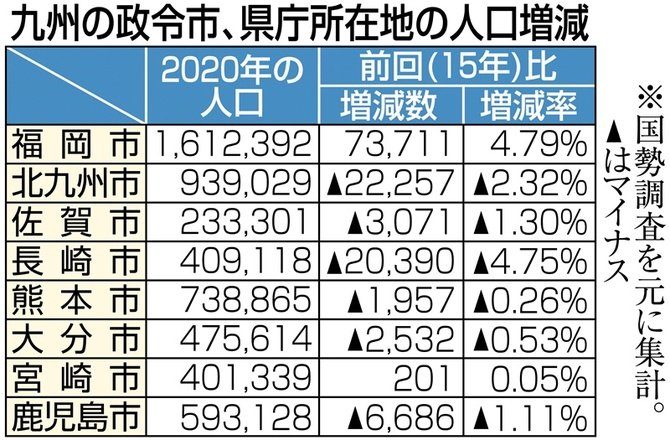Several years ago, I stumbled across some interesting growth projections for the city of Fukuoka. The first graph (below) shows actual growth from 1975 to 2005.
Of the eight cities studied, Fukuoka (福岡 ■) has grown the most (over 150%) during those thirty years, followed by Sapporo (札幌 ▲ 145%+), Sendai (仙台 ▲ 140%), and Tôkyô (東京 ■ 130%). Much of the growth here, I suspect, has come from depopulation of areas outside of Fukuoka. Evidence of this can be seen in the steady decline of Kitakyūshū's population (北九州 ●) since the mid 80s. Similar declines have occured in cities throughout the area.
I visited the former coal mining town of Ômuta once and learned that in its heyday the city had over 200,000 people. Today, the population is half that figure and falling fast.
The next graph shows growth projections for a number of cities in Japan over the next twenty-two years. Using 2005 as the starting point, Ōsaka City (大阪) is expected to to see its population drop to about 85% of its 2005 population by the year 2035. The only cities predicted to maintain their 2005 population levels over the next two decades are Fukuoka (福岡市) and Tōkyō (東京). The greater metropolitan area of Fukuoka City (福岡都市圏) is also expected to maintain its 2005 population level.
According to the Nomura Research Institute, Fukuoka City was ranked number one among 100 Japanese cities in terms of its growth potential. Kagoshima City in the south of Kyūshū came in second. Kurume City came in fifth. Note that 6 of the top 10 cities are in the Kyūshū/Okinawa Region.
The following data from the Nishinippon Shimbun shows that the growth Fukuoka City has been enjoying is the exception to the norm among the cities of Kyūshū. (Note that ▲ represents a minus). Add up the population losses in the other cities (about 57,000) and you can see where much of Fukuoka’s growth is coming from. According the the article, Fukuoka is not only sucking up people, but money, too from neighboring cities and prefectures.





